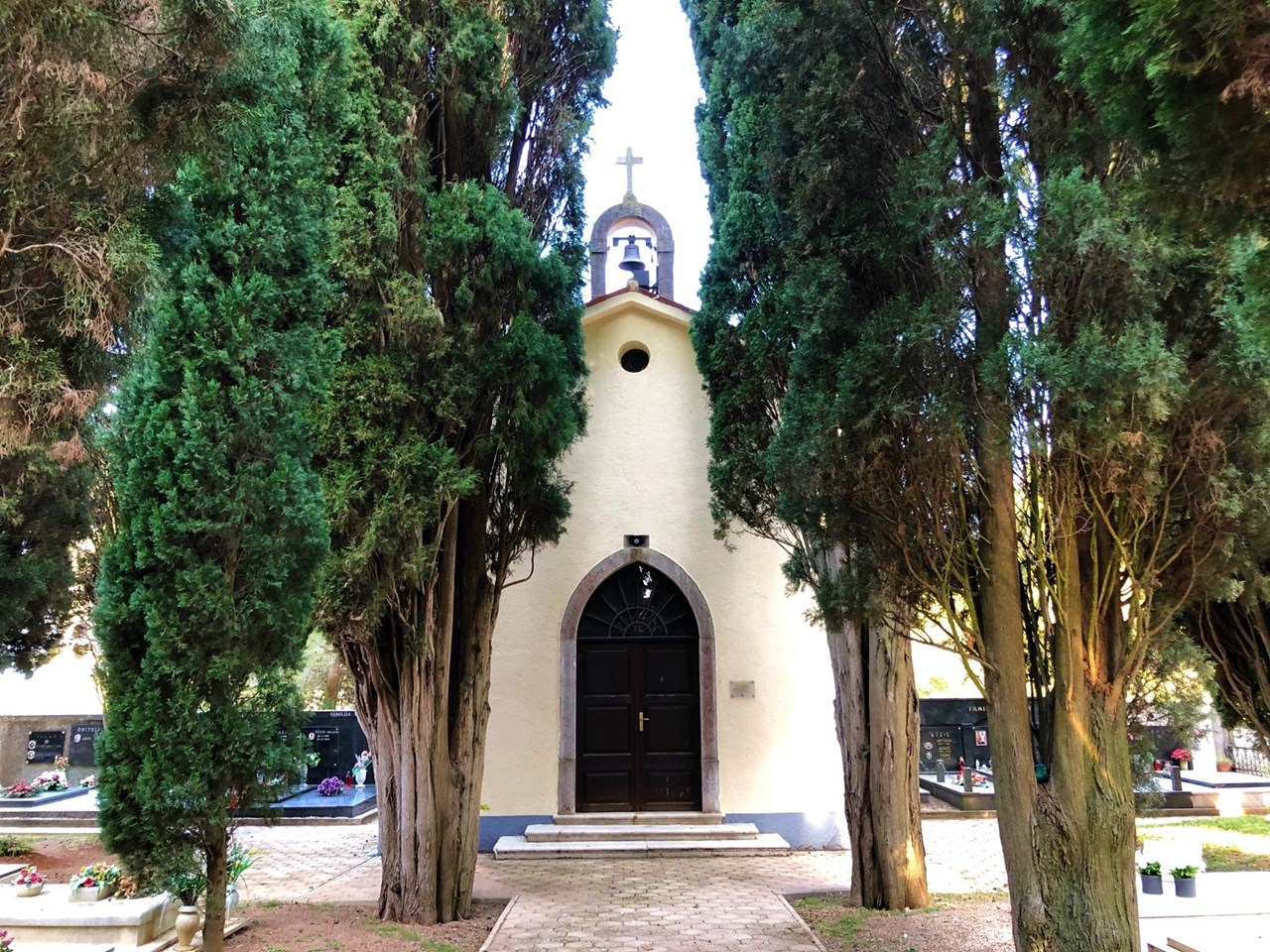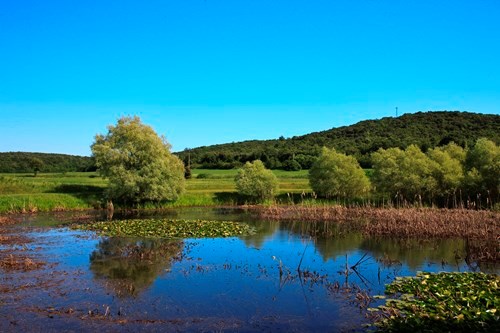

Today’s Church of St Peter was built in 1900 on the location an older church that no longer existed and which were named after the same saint. At the same time, the Vrsar graveyard was built by bringing in earth from the depression on its northern side, which was a result of a systematic removal of earth. Next to the saint’s name stands the phrase of Flaban, which is a reference to the nearby pond called Flaban, one of the more striking natural features of Vrsar.

The Church of St Peter was built in 1900, at the same time the Vrsar graveyard was built.
On the location of today’s Vrsar graveyard there have been two churches throughout history. The older church belongs to the group of Romanesque churches in Istria, and its oldest mention dates back to the period of the Poreč bishop Oton (1256-1282), who granted it to Petar form Vrsar. The church was mentioned in 1293 as S. Pietro in Lozio, where the name Lozio refers to the nearby pond (today situated on the other side of the road) mentioned in the earliest historical documents on Vrsar and the area around it (Lat. lozio = pond). The Church of St Peter is mentioned in the Cadastre of all Property of the Poreč Bishopric (Catasto di tutti beni dell’episcopato di Parenzo) as in Fiabam. The entire coastline where the church was located was called Fiabam in the 16th century. The name was extended to mean the nearby ancient pond. The church was likely famous for the proximity to such a large pond, which had been significant for almost a thousand years. In later centuries, the church was abandoned and completely ruined, therefore it was not mentioned in the 1820 Franciscan Cadastre, even though the nearby Flaban pond is duly recorded in it.
Church of St Peter of Flaban. Flaban is a reference to the nearby pond called Flaban (Fabjan), one of the more striking natural features of Vrsar.
